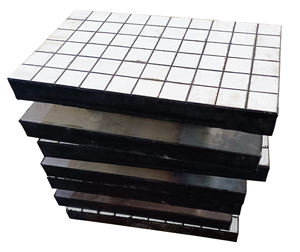Discover Premium Ceramic Products | Durability & Elegance United | Advanced Ceramics
1. Introduction
Just 36 hours ago, researchers at MIT unveiled a game-changing method to recycle silicon carbide waste from semiconductor fabs into high-purity crucible-grade material—slashing costs by 40% and cutting CO2 emissions in half. Suddenly, the humble silicon carbide crucible isn’t just a lab staple; it’s a sustainability superstar.

But not all silicon carbide crucibles are created equal. Some crack under pressure (literally). Others outlive three grad students. So what’s really going on inside that black, heat-resistant pot? Let’s crack it open—pun absolutely intended.
2. What Makes a Silicon Carbide Crucible So Special?
Silicon carbide (SiC) isn’t your grandma’s stoneware. It’s a covalent ceramic with a melting point north of 2,700°C, exceptional thermal conductivity, and resistance to thermal shock that would make cast iron blush.
Unlike traditional alumina crucibles, silicon carbide crucibles don’t just survive extreme conditions—they thrive in them. That’s why you’ll find them in foundries melting aluminum, labs growing sapphire crystals, and even in artisanal silicon carbide ceramic baking dishes that double as Instagram-worthy dinnerware.
3. Types of Silicon Carbide Crucibles: Not All Black Pots Are Equal
3.1 Reaction-Bonded SiC (RBSiC)
RBSiC silicon carbide tile blocks and crucibles are made by infiltrating porous carbon preforms with molten silicon. The result? Near-net-shape parts with excellent strength and moderate porosity.
- Pros: Cost-effective, good dimensional accuracy
- Cons: Residual silicon can contaminate ultra-pure melts

3.2 Sintered SiC
These are the Ferrari of crucibles—dense, pure, and pricey. Made by sintering high-purity silicon carbide powder with additives like boron and carbon, they’re ideal for semiconductor and optical applications.
- Pros: Ultra-high purity, minimal contamination
- Cons: Expensive, brittle under mechanical stress
3.3 Nitride-Bonded SiC
Bonded with silicon nitride instead of free silicon, these offer better oxidation resistance and are common in kiln furniture like silicon carbide ceramic columns and burner nozzles.
4. Silicon Carbide vs. Silicon Nitride: The Great Crucible Showdown
Enter silicon nitride—a ceramic cousin often confused with SiC but fundamentally different. While silicon carbide excels in thermal conductivity, silicon nitride shines in fracture toughness and creep resistance at high temps.
A silicon nitride crucible factory might produce vessels perfect for molten silicon handling, but they’ll cost 2–3× more than SiC equivalents. And while custom silicon nitride heat shields protect aerospace components, they’re overkill for your average foundry.

Fun fact: Boron carbide vs silicon carbide debates rage in armor circles, but in crucibles? SiC wins on cost, availability, and thermal performance. Boron carbide is harder—but also more expensive and harder to fabricate.
5. Beyond the Lab: Unexpected Uses of Silicon Carbide Ceramics
Who knew your holiday table could feature silicon carbide ceramic Christmas plates or a silicon carbide ceramic casserole dish with lid? Artisans are now crafting everything from silicon carbide ceramic salad bowls to handcrafted black plates that double as functional art.
Meanwhile, industrial applications keep expanding: silicon carbide thermocouple protection tubes guard sensors in molten metal baths, while silicon carbide porous ceramic tubes filter aggressive chemicals in semiconductor fabs.
Even plumbing’s getting in on the act—silicon carbide ceramic disc taps and quarter-turn valves leverage SiC’s wear resistance for decades of drip-free service.
6. The Dark Side (and Light Side) of SiC Dinnerware
Yes, you can buy silicon carbide white ceramic plates or blue-white porcelain-inspired versions. But beware: not all ‘silicon carbide ceramic dishes’ contain actual SiC. Some are just glazed stoneware with a marketing buzzword.
True silicon carbide ceramic dinnerware—like a silicon carbide baking dish Staub might envy—is oven-safe to 1,200°C, non-porous, and won’t leach metals. It’s also heavy enough to double as a paperweight during Zoom calls.
7. Conclusion
From RBSiC silicon carbide tile blocks in industrial furnaces to silicon carbide ceramic ramekins on your brunch table, this material bridges the gap between hardcore engineering and everyday elegance. With recycling breakthroughs making it greener and cheaper, the silicon carbide crucible isn’t just surviving—it’s evolving. So next time you see that black ceramic pot, remember: it’s not just holding molten metal—it’s holding the future.
Our Website founded on October 17, 2012, is a high-tech enterprise committed to the research and development, production, processing, sales and technical services of ceramic relative materials such as 5. Our products includes but not limited to Boron Carbide Ceramic Products, Boron Nitride Ceramic Products, Silicon Carbide Ceramic Products, Silicon Nitride Ceramic Products, Zirconium Dioxide Ceramic Products, etc. If you are interested, please feel free to contact us.
